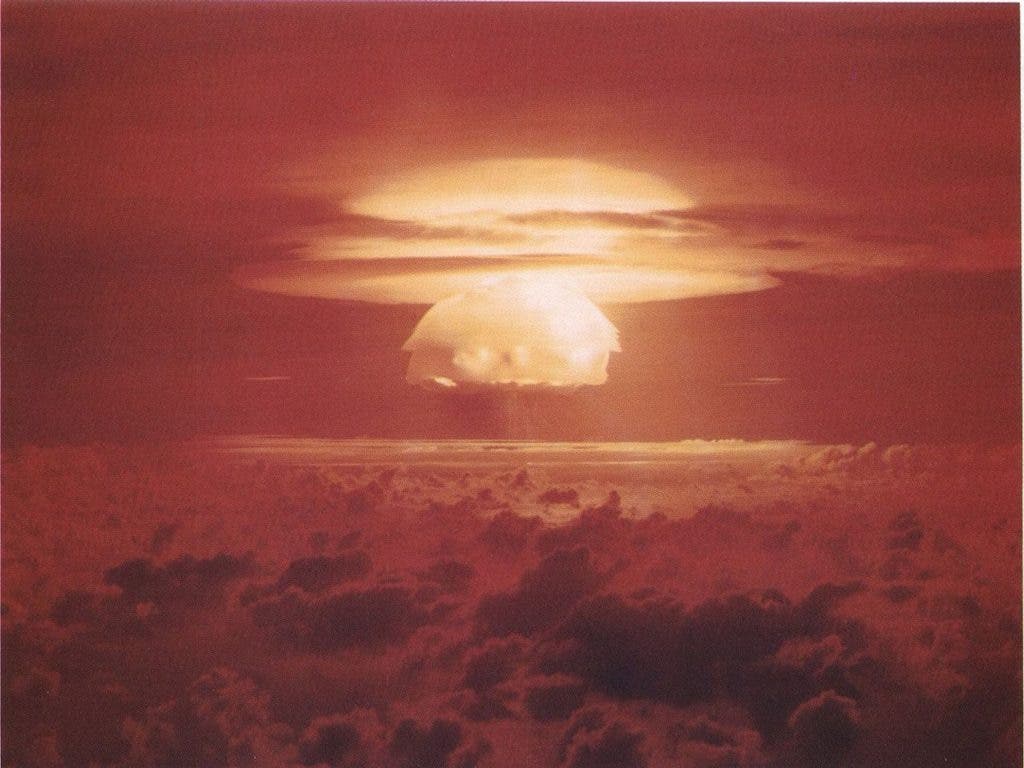On the backdrop of growing tensions between Russia and the US, following the latter’s decision to withdraw from the Intermediate-Range Nuclear Forces (INF) Treaty, researchers have devised a simulation of a nuclear conflict between the two countries. And the results are not good — not good at all.

Winter is coming
Although the exact number of nukes in each country’s arsenal is a closely guarded secret, officially there are nine nations who operate a total of 14,500 nuclear weapons. The vast majority are owned by the US and Russia.
Although anxiety over nuclear war is nowhere near what it was during the height of the Cold War, a 2018 World Economic Forum survey of over 1,000 leaders from government, business, and other industries identified nuclear war as a top threat.
To be fair, the actual chances of a nuclear war happening during our lifetimes is small, but even a tiny risk, in this case, is frightening simply because nukes exist.
A single nuke is enough to kill hundreds of thousands of people in mere hours, and millions more in the coming months and years after detonation.
An all-out nuclear war between the US and Russia would simply be devastating, as a recent study shows.
Researchers at Rutgers University, the University of Colorado Boulder, and the National Center for Atmospheric Research performed a simulation using a climate model that analyzed the effects of a nuclear war between the two most nuke-stocked countries in the world.
The study confirms previous simulations, as the one performed in 2007 by NASA, finding that nuclear war would plunge the planet in a 10-year-long nuclear winter.
According to the study, which was published in the Journal of Geophysical Research: Atmospheres, the detonation of the two countries’ nuclear arsenals would result in the injection of nearly 150 million tons of soot into the atmosphere.
“Despite having different features and capabilities, both models produce similar results. Nuclear winter, with below freezing temperatures over much of the Northern Hemisphere during summer, occurs because of a reduction of surface solar radiation due to smoke lofted into the stratosphere,” the authors wrote in their study.
Within weeks from the first detonations, the soot would have spread around the whole stratosphere, blocking sunlight. As a result, during the first year following the soot injection, global temperatures would plunge by more than 7°C. Later, the planet could cool by as much as 9°C.
The knock-off effects of such a dramatic cooling would be devastating. Food crops would be severely affected, rainfall would be reduced by around 30% globally, extreme weather events would become more variable — and that’s without taking into account the effects of nuclear fallout on human health and wildlife.
What’s truly scary is that you don’t need to detonate thousands of nuclear weapons to alter the climate. A 2017 study found that even as few as five conventional nuclear bombs are enough to trigger dramatic changes in the climate, or so-called ‘nuclear autumns’.
Even a nuclear war between India and Pakistan — two neighboring countries which view each other as nemeses — could produce so much smoke that it would produce global environmental change unprecedented in recorded human history.
China’s DF-5 ICBM, armed with a single 5-megaton warhead, can alone trigger a nuclear autumn. If the DF-5 were to be detonated over Los Angeles, the 5 megaton warhead would have a fireball more than two miles wide, and guarantee third-degree burns 15 miles from the point of detonation.
If all that sounds scary, it’s because it truly is. Luckily, the prospect of mutually assured annihilation keeps nuclear powers in check — but for how long? The truth is that the world won’t ever breathe easily until all nuclear warheads are dismantled, something which might never happen.









